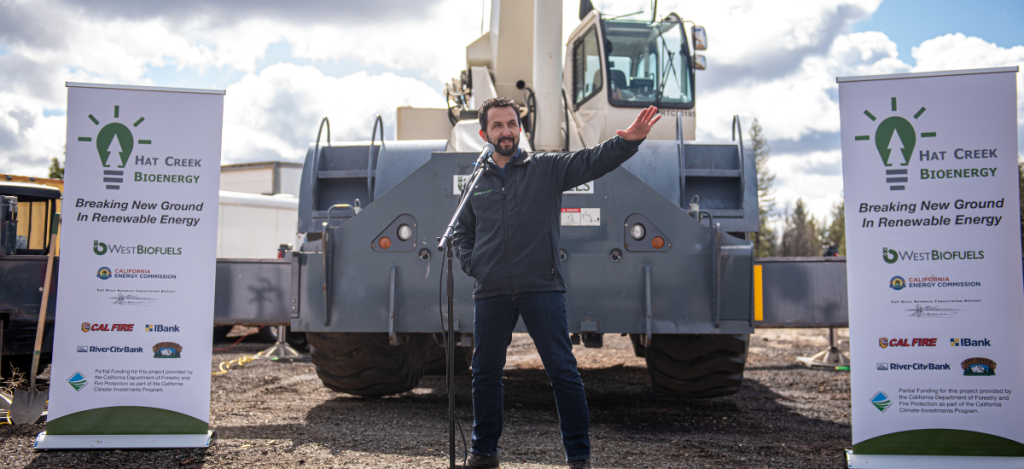Building Trust: The Essential Role of Proactive Communication in Construction and Infrastructure

In construction, infrastructure, and development, success isn’t just about blueprints and bulldozers. It’s about building something equally important: trust and goodwill within the communities where projects take shape. Forward-thinking companies are recognizing that proactive communication and community engagement aren’t just nice-to-have extras—they’re essential strategies for ethical business practices and long-term success. Let’s face it: construction projects impact communities. They bring noise, traffic disruptions, and changes to familiar landscapes. These impacts can quickly lead to frustration, opposition, and costly delays without proper communication. However, companies can turn potential adversaries into allies by getting ahead of potential issues through proactive outreach and engagement. Imagine this scenario: You’re about to break ground on a major development. Instead of waiting for the inevitable questions and concerns to bubble up, you reach out to the community early. You host informal meet-and-greets, set up an informative project website, and actively seek input from local residents. Perhaps you even start investing in the community’s nonprofits and initiatives that reflect your company’s culture to build relationships and good stewardship. By the time construction starts, you’ve already built a foundation of trust and understanding. This approach isn’t just about being a good neighbor (though that’s vitally important too). It’s a smart business strategy with real, tangible benefits. When you engage proactively, you’re not just managing your reputation but actively shaping it. You’re demonstrating transparency, showcasing your commitment to responsible development, and building a positive brand image that extends far beyond any single project. Think of effective communication as a form of insurance. It helps mitigate risks like project delays, negative media coverage, and difficulty securing approvals for future projects. When communities understand and support your work, you’re likely to encounter smoother permitting processes, fewer complaints during construction, and increased cooperation from local stakeholders. All of this translates to improved operational efficiency and a healthier bottom line. But how do you put this into practice? Start by reaching out early – well before breaking ground. Use a mix of communication channels to reach diverse audiences. This might include traditional town halls and printed materials but don’t neglect digital platforms like social media and project-specific websites. The key is to maintain consistent communication throughout the project lifecycle. Remember, effective communication is a two-way street. Create opportunities for genuine dialogue and show how community input influences your decisions. Be upfront about challenges—acknowledge potential negative impacts and clearly explain your mitigation efforts. At the same time, don’t shy away from highlighting the benefits your project will bring, whether it’s job creation, infrastructure improvements, or other positive community impacts. It’s also crucial to ensure your entire team is on board. Every employee who interacts with the public should be well-versed in your communication strategy and company values. Consider partnering with local organizations to build trust and amplify your positive impact. These collaborations can open doors and create goodwill that lasts long after a project is completed. Every interaction is an opportunity to demonstrate your commitment to responsible development. When done right, proactive communication can transform potential adversaries into allies, creating a smoother path for your current project and a brighter future for your entire organization. So, the next time you plan a project, remember that your most important blueprint might be your communication strategy. By prioritizing open, honest, and proactive engagement, you’ll not only be a good community steward but also set your company up for sustainable success in an increasingly connected world. Ready to get started? Contact us today—Call 855-MKTNGCO or click here!! (AI Disclaimer: proofed by Grammarly and lightly edited using Claude)
The Power of Trauma-Informed Communications & Marketing: Why CEOs Must Embrace This Approach

Trauma is a pervasive issue that affects people from all walks of life, with research suggesting that 60% of men and 50% of women experience at least one trauma in their lives (National Center for PTSD, 2022). Without support and resources, trauma can negatively impact your health, well-being, and quality of life. There is no quick fix because it impacts people in different ways at different times, and it’s rooted in some of our nation’s most pervasive challenges, including substance misuse, intergenerational poverty, and community violence. Paradigm shift Thankfully, there is a growing recognition that we can’t solve problems with the same thinking that created them. And that’s where the trauma-informed approach enters the conversation. More than a buzzword, it’s a commitment to an ongoing (and ever-evolving) approach to acknowledging the prevalence of trauma, promoting transformational resilience, and fostering a supportive/inclusive environment. How does this apply to the world of communications? (i.e., marketing, public relations, crisis communications, graphic design, messaging, content creation, social media, community engagement, podcast/video production, etc.) It flips the outdated model of using fear, shock, scarcity, click/ragebait, and violence to capture our targeted audiences’ attention. It admits that the “if it bleeds, it leads” local news strategy harms society more than it helps. And it reconciles with the fact that “buy this to make you happy” messaging is actually making more and more people miserable. Take Apple’s recent iPad commercial. Many people (myself included) thought it was tone deaf and dystopian. It was trying to brag about how many tools fit in an iPad–and yet, the imagery was of Big Tech, literally destroying things that set humanity apart from the natural world and make life worth living. Universal tools that have served us for millennia, including musical instruments and art. Some may point out that it’s garnered 2.3 million views on its official YouTube channel, so mission accomplished. I say that’s short-sighted and antiquated. Imagine, instead, a commercial showing people worldwide using these tools throughout history with a split screen of a modern person practicing the same activity on their iPad. How would that make you feel about choosing Apple products? (And a reminder that Apple fully understands and knows how to execute this type of commercial.) If your targeted audiences are healing from or working through traumatic experiences, utilizing an antiquated communications approach may grab short-term attention, but it may also erode long-term trust, loyalty, and engagement. Trauma-informed communications can demonstrate a brand’s commitment to understanding and supporting its audience’s well-being. When your audience feels seen, heard, and valued, they are likelier to engage, which is essential for building lasting relationships and driving meaningful growth. How do we get there? The Substance Abuse and Mental Health Services Administration (SAMHSA) provides a framework for understanding and responding to the impact of trauma on individuals and communities. Their six principles (safety, trustworthiness/transparency, peer support, collaboration/mutuality, empowerment/voice/choice, and cultural/historical/gender issues) can be integrated into any organization, system, sector, or industry, including communications. A few tips include: Fully represent the communities you serve in your messaging and design by creating a sense of physical and emotional safety Always provide accurate and empathetic information (i.e., meet your audience where they are) Use inclusive language Avoid gratuitous content, sensationalism, and exploitation Avoid greenwashing and propaganda and instead communicate your value proposition with transparency and authenticity Focus on storytelling “heroes” over “villains”—call in rather than out Highlight stories of lived experiences who have overcome adversity (SEE ALSO: Helpful tips for sharing lived experiences) Provide accessible options for your audience to communicate with you and provide feedback Be transparent about your data collection and privacy practices, and provide easy-to-understand information about how personal data is used Provide resources and information that empower your audience to make informed choices Educate yourself and your team on the cultural and historical context of the communities/audiences you serve In the coming months, we’ll publish blogs that cover each tip in-depth with real-world examples. Trauma-informed communications is not just a trend or a box to check but a fundamental shift in how we approach story-telling and advocacy. It’s an ongoing process of learning and refining your tactics to create a more inclusive, empowering, and authentic relationship with your audience, fostering deeper connections and brand loyalty. If you’re ready to take the first step in integrating trauma-informed principles into your organization’s communications, contact us today to learn how we can help you create a more resilient and impactful brand. Go deeper Podcast: The Importance Of Strength-Based, Trauma-Informed And Inclusive Marketing (Managing Marketing) (AI Disclaimer: proofed by Grammarly and lightly edited using Claude)
